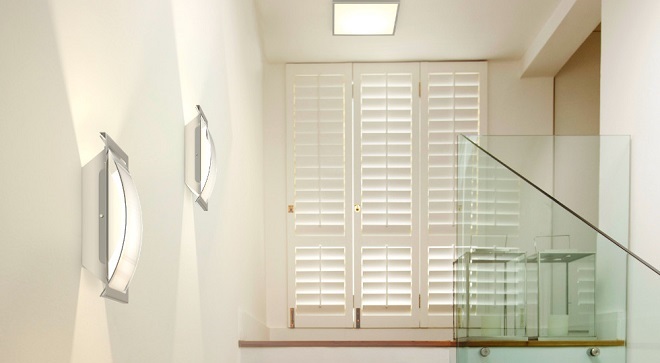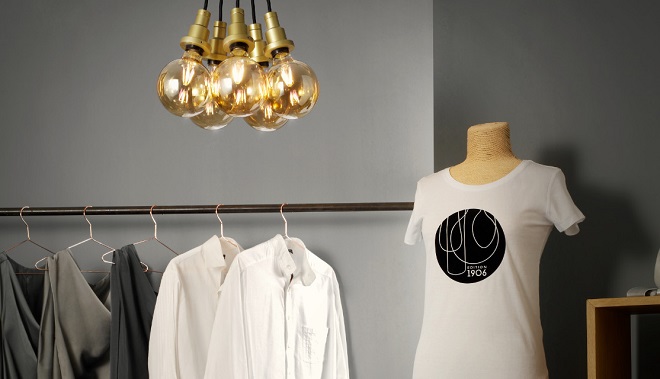There are several options available in the market when it comes to choosing the right lighting solution for your business. Two popular options are LED and halogen lighting. While halogen bulbs have been a mainstay in the industry for many years, LED lighting has been gaining popularity due to its energy efficiency and longer lifespan.
In this article, we will show you the
difference between halogen and LED. In addition, we will also discuss the cost-effectiveness, energy efficiency, and environmental impact of both options. So, you can make an informed decision and choose the best lighting solution for your business. Read on.

What is Halogen VS LED?
Halogen lights are a type of incandescent light that emits a bright, white light using halogen gas. The gas helps the filament last longer and burn brighter.
LED lamps utilize light-emitting diodes as their light sources, and are usually made of semiconductor LEDs. Compared to incandescent and halogen lamps, LED lamps have a longer lifespan and higher luminous efficiency, reaching several times the amount.
Difference Between Halogen and LED
Halogen lights may seem like a cost-effective choice compared to LED lights, but they have a shorter lifespan and are more likely to burn out. In Addition, halogen lights consume nearly 80% of their energy to generate heat, which means only 20% is emitted as light. This inefficiency makes many companies choose LED lights as their preferred option. Not only do they last longer and require less maintenance, but they also use less energy and emit more light.
LED lights significantly outperform halogen bulbs, with a lifespan of over 25,000 hours compared to good-quality halogen bulbs which only last for 3,600 hours. This translates to a lifespan of more than 15 years for an LED light, in contrast to just 2-3 years for a halogen bulb when used for 4 hours a day.
Another advantage of LED lights is that they are less affected by repeated cycling (on and off) than halogen bulbs, which can shorten the lifespan of a halogen lamp.

As we mentioned above, halogen light generates a significant amount of heat, which can increase the risk of fire or other hazards. In comparison, LED lights release much less heat - typically three to four times less than halogen lamps. It means that LED lights are a safer choice for businesses that need to maintain a comfortable and secure environment for their employees and customers.
LEDs are brighter than halogen lights. LED emitting 80-100 lumens per watt versus halogen's 16-24 lumens per watt. It means LED lights consume less energy while producing brighter light.
Halogen bulbs are prone to breakage and damage from vibrations and shocks, making them less durable compared to LED lights. Built with solid-state technology, LED lights eliminate fragile filaments and moving parts, resulting in increased durability. Besides, LED lights are more resistant to temperature changes, and they can operate in extreme temperatures without getting damaged, unlike halogen bulbs that are sensitive to temperature changes and prone to overheating.
LED Vs. Halogen Comparison Chart
| |
LED |
HALOGEN
|
|
Colour of Light
|
Available in many shades
|
Yellow
|
|
Design flexibility
|
can be designed for various mounting configurations
|
not easy to design the in different mounting
|
|
Average cost
|
$6/bulb
|
$4/bulb
|
|
Running cost
|
HIGH
|
lower than LED
|
|
Energy Usage
|
8W
|
90W
|
|
Dimmable
|
YES
|
YES
|
|
UV emission
|
None
|
Little
|
LEDVANCE - Professional Light Manufacturers
If you’re looking for a reliable lighting supplier,
LEDVANCE is a good choice.
For LED light, you can discover our comprehensive range of
LED lights, tailored to meet your unique requirements. Whether you need
A-LINE,
PAR SERIES,
MR SERIES, PIN BASED, or other types, we have it all. LED lights have a wide range of applications in residential and commercial lighting, such as in homes, offices, retail stores, and warehouses. Apart from that, they are also used for automotive lighting, outdoor lighting, street lighting, and in the entertainment industry for stage lighting and displays. Choose the perfect product series that fits your needs and enjoy the benefits of top-quality LED lighting.

However, we understand that traditional halogen lamps are still in demand for various applications. That's why we offer a wide selection of halogen lights. Our halogen lights are popular options for retail merchandising, hotels, restaurants, and art galleries where bright white light, dimmable, and good color rendering are desired. Browse our
halogen lights collection to find the perfect fit for your specific needs.



